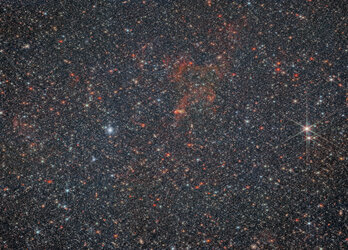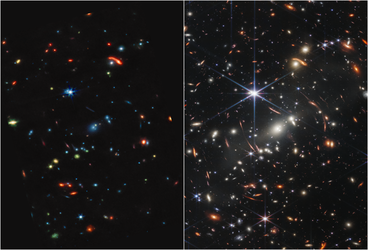Accept all cookies Accept only essential cookies See our Cookie Notice

About ESA
The European Space Agency (ESA) is Europe’s gateway to space. Its mission is to shape the development of Europe’s space capability and ensure that investment in space continues to deliver benefits to the citizens of Europe and the world.
Highlights
ESA - United space in Europe
This is ESA ESA facts Member States & Cooperating States Funding Director General Top management For Member State Delegations European vision European Space Policy ESA & EU Space Councils Responsibility & Sustainability Annual Report Calendar of meetings Corporate newsEstablishments & sites
ESA Headquarters ESA ESTEC ESA ESOC ESA ESRIN ESA EAC ESA ESAC Europe's Spaceport ESA ESEC ESA ECSAT Brussels Office Washington OfficeWorking with ESA
Business with ESA ESA Commercialisation Gateway Law at ESA Careers Cyber resilience at ESA IT at ESA Newsroom Partnerships Merchandising Licence Education Open Space Innovation Platform Integrity and Reporting Administrative Tribunal Health and SafetyMore about ESA
History ESA Historical Archives Exhibitions Publications Art & Culture ESA Merchandise Kids Diversity ESA Brand Centre ESA ChampionsLatest
Space in Member States
Find out more about space activities in our 23 Member States, and understand how ESA works together with their national agencies, institutions and organisations.
Science & Exploration
Exploring our Solar System and unlocking the secrets of the Universe
Go to topicAstronauts
Missions
Juice Euclid Webb Solar Orbiter BepiColombo Gaia ExoMars Cheops Exoplanet missions More missionsActivities
International Space Station Orion service module Gateway Concordia Caves & Pangaea BenefitsLatest
Space Safety
Protecting life and infrastructure on Earth and in orbit
Go to topicAsteroids
Asteroids and Planetary Defence Asteroid danger explained Flyeye telescope: asteroid detection Hera mission: asteroid deflection Near-Earth Object Coordination CentreSpace junk
About space debris Space debris by the numbers Space Environment Report In space refuelling, refurbishing and removingSafety from space
Clean Space ecodesign Zero Debris Technologies Space for Earth Supporting Sustainable DevelopmentLatest
Applications
Using space to benefit citizens and meet future challenges on Earth
Go to topicObserving the Earth
Observing the Earth Future EO Copernicus Meteorology Space for our climate Satellite missionsCommercialisation
ESA Commercialisation Gateway Open Space Innovation Platform Business Incubation ESA Space SolutionsLatest
Enabling & Support
Making space accessible and developing the technologies for the future
Go to topicBuilding missions
Space Engineering and Technology Test centre Laboratories Concurrent Design Facility Preparing for the future Shaping the Future Discovery and Preparation Advanced Concepts TeamSpace transportation
Space Transportation Ariane Vega Space Rider Future space transportation Boost! Europe's Spaceport Launches from Europe's Spaceport from 2012
NGC 602 (NIRCam and MIRI image)
Thank you for liking
You have already liked this page, you can only like it once!
Near the outskirts of the Small Magellanic Cloud, a satellite galaxy roughly 200 000 light-years from Earth, lies the young star cluster NGC 602, which is featured in this new image from the NASA/ESA/CSA James Webb Space Telescope. This image includes data from Webb’s NIRCam (Near-InfraRed Camera) and MIRI (Mid-InfraRed Instrument).
The local environment of this cluster is a close analogue of what existed in the early Universe, with very low abundances of elements heavier than hydrogen and helium. The existence of dark clouds of dense dust and the fact that the cluster is rich in ionised gas also suggest the presence of ongoing star formation processes. This cluster provides a valuable opportunity to examine star formation scenarios under dramatically different conditions from those in the solar neighbourhood.
An international team of astronomers, including Peter Zeidler, Elena Sabbi, and Antonella Nota, used Webb to observe NGC 602 and detected candidates for the first young brown dwarfs outside our Milky Way.
[Image description: A star cluster is shown inside a large nebula of many-coloured gas and dust. The material forms dark ridges and peaks of gas and dust surrounding the cluster, lit on the inner side, while layers of diffuse, translucent clouds blanket over them. Around and within the gas, a huge number of distant galaxies can be seen, some quite large, as well as a few stars nearer to us which are very large and bright.]
-
CREDIT
ESA/Webb, NASA & CSA, P. Zeidler, E. Sabbi, A. Nota, M. Zamani (ESA/Webb) -
LICENCE
CC BY 4.0 INT or ESA Standard Licence
(content can be used under either licence)

NGC 602 (Webb image)

NGC 602: Comparing Hubble's & Webb's view

NIRCam’s view of NGC 6822

Webb’s first deep field (MIRI and NIRCam)















 Germany
Germany
 Austria
Austria
 Belgium
Belgium
 Denmark
Denmark
 Spain
Spain
 Estonia
Estonia
 Finland
Finland
 France
France
 Greece
Greece
 Hungary
Hungary
 Ireland
Ireland
 Italy
Italy
 Luxembourg
Luxembourg
 Norway
Norway
 The Netherlands
The Netherlands
 Poland
Poland
 Portugal
Portugal
 Czechia
Czechia
 Romania
Romania
 United Kingdom
United Kingdom
 Slovenia
Slovenia
 Sweden
Sweden
 Switzerland
Switzerland
























